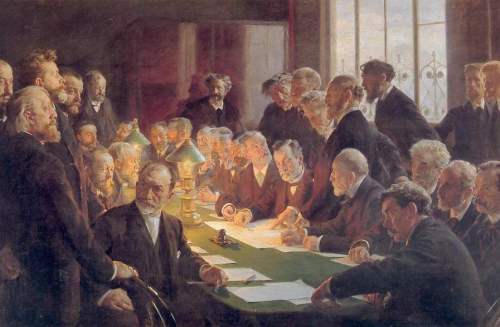Small Vs Large Top Management Teams and the CEO’s Workload
This is one of our free-to-access content pieces. To gain access to all Ideas for Leaders content please Log In Here or if you are not already a Subscriber then Subscribe Here.

The larger a CEO’s top management team or direct reports, the more time that CEO spends interacting with internal staff on internal operations issues and the less time he or she spends working alone. Thus, CEOs seeking more time for strategy and individual work, and less time for collaboration and team consensus activities, might opt for smaller top management teams instead.
‘Span of control’, a concept which refers to the number of people who report directly to a manager, has been part of the management lexicon for decades. New technology, which enables easier access to more comprehensive data, now allows researchers to study in greater detail the implications of span of control — specifically how the number of direct reports affects what researchers call ‘span of attention’. Span of attention refers to the choices that CEOs and other managers make on how they allocate their time, including with whom and what topics are discussed.
For example, in theory, the larger a CEO’s top management team, the more time the CEO would have to spend with outside constituencies, such as customers and suppliers, and on individual work. An in-depth analysis of the calendars of 65 CEOs, drawn from an original pool of 347 CEOS, reveal that the larger the top management team, the less time CEOs spend working alone and the more time they spend in internal meetings with employees and top management team members. (The time spent without outside constituencies is much less affected, however: whether they have large or small top management teams, CEOs will spend approximately the same amount of time with external constituencies.)
The research also breaks down the detail of these internal meetings, including whether they are bilateral or multilateral, planned or unplanned, and single or cross-functional. The more people directly reporting to the CEO, the data shows, the more likely the CEO will hold planned, multilateral, cross-functional meetings.
The pressure on these kind of planned, multilateral and cross-functional meetings is only alleviated when there is a COO on the top management team. The presence of other leaders, such as business unit managers or other functional reports, do not have an impact on the CEO’s span of attention.
Finally, this correlation between span of control and span of attention is more prevalent in larger firms.
CEOs may believe that a larger top management team will allow them to delegate internal operating matters and free them up to focus more on outside constituencies and strategic tasks. However, the larger the top management team, the more time CEOs spend with them. There are some possible reasons for this correlation, including the likelihood that larger teams are more heterogeneous and less integrated than a smaller team. Consensus may not be as easy to reach. Thus, the CEO may be required to spend more time on ensuring collaboration and cohesion among the team.
While researchers note that they have not empirically proven the causal relationship between size and time, leaders may want to take the results under consideration as they build or revamp their top management teams. Counterintuitively, a smaller team might leave a CEO with more time for strategic issues and non-collaborative work. The presence of a strong number two person in the top management team is also clearly important.
The reverse is also true. If CEOs want to become more involved in internal operations, a larger top management team is the answer.
One final lesson emerged from the research: the CEOs studied usually had an inaccurate impression of how they allocated their time. CEOs and other leaders may want to analyse their calendars to determine how they really spend their time — and then determine whether the allocation fits the strategy and priorities of their firms.

Ideas for Leaders is a free-to-access site. If you enjoy our content and find it valuable, please consider subscribing to our Developing Leaders Quarterly publication, this presents academic, business and consultant perspectives on leadership issues either as a digital subscription, or better still in a beautifully produced, small volume delivered to your desk four times a year.

For the less than the price of a coffee a week you can read over 650 summaries of research that cost universities over $1 billion to produce.
Use our Ideas to:
Speak to us on how else you can leverage this content to benefit your organization. info@ideasforleaders.com